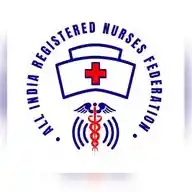
African Nurses TV
1.9K subscribers
About African Nurses TV
African Nurses 𝐓𝐕: 𝐖𝐞 𝐄𝐝𝐮𝐜𝐚𝐭𝐞 ✨📚 𝐈𝐧𝐟𝐨𝐫𝐦 🔊 𝐄𝐧𝐭𝐞𝐫𝐭𝐚𝐧 🥁 𝐎𝐮𝐫𝐬𝐞𝐥𝐯𝐞𝐬 ✨ African Nurses is a premier website dedicated for nurses, students and those considering a career in nursing. African nurses provides informational content on nursing & healthcare, education and career tips
Similar Channels
Swipe to see more
Posts

_🔹CONTRAINDICATIONS FOR OXYGEN THERAPY_ ▪️Oxygen therapy, while essential for many conditions, may have contraindications or be used with caution in certain situations. _🔹HYPO VENTILATION._ ▪️In patients with hypoventilation,excessive oxygen can reduce the respiratory drive further, potentially leading to respiratory depression or failure. _🔹CHRONIC OBSTRUCTIVE PULMONARY DISEASE (COPD) WITH CO2 RETENTION_. ▪️ In COPD patients, high levels of oxygen can exacerbate hypercapnia (elevated CO2 levels) and lead to respiratory acidosis or further respiratory depression. _🔹CERTAIN TYPES OF PNEUMOTHORAX._ ▪️ Oxygen therapy can exacerbate a pneumothorax (air in the pleural space) in some cases, particularly if the condition is not well-managed. _🔹INFLAMMATORY LUNG CONDITIONS._ ▪️In conditions like acute respiratory distress syndrome (ARDS) or severe pneumonia, excessive oxygen can sometimes cause additional lung damage or worsen inflammation. _🔹HYPERBARIC OXYGEN THERAPY._ ▪️Oxygen therapy at high pressures (hyperbaric oxygen therapy) should be avoided or used cautiously in patients with certain conditions, such as untreated pneumothorax or certain types of cardiovascular conditions, due to the risk of barotrauma and other complications. _🔹ABSENCE OF A CLEAR DIAGNOSIS._ ▪️ Administering oxygen therapy without a clear diagnosis or proper indication can mask underlying conditions and delay appropriate treatment, so it should be carefully considered and monitored. _🔹OXYGEN TOXICITY RISK._ ▪️Prolonged exposure to high concentrations of oxygen can lead to oxygen toxicity, causing damage to lung tissues and central nervous system effects, such as seizures. _🔹DEVICES USED IN OXYGEN THERAPY_ ▪️Oxygen therapy utilizes various devices to deliver supplemental oxygen to patients, tailored to their specific needs. ▪️Low-flow systems, such as nasal cannulas and face masks, provide oxygen in lower concentrations and are ideal for patients requiring modest increases in oxygen levels. ▪️ High-flow systems, including Venturi masks and high-flow nasal cannulas, deliver precise and higher concentrations of oxygen, making them suitable for patients with more severe respiratory issues. ▪️Each device plays a crucial role in ensuring effective oxygen delivery and patient comfort. ▪️Understanding the distinctions between these systems helps in selecting the appropriate therapy for optimal patient outcomes Here are the common types of oxygen therapy devices, including their usage: _🔹LOW-FLOW SYSTEMS_ ▪️Low-flow systems deliver oxygen through narrow-bore tubing. ▪️Devices used for low-flow oxygen administration include nasal cannulas, face masks, oxygen tents, and transtracheal catheters. _🔹NASAL CANNULA(PRONGS)._ ▪️ A nasal cannula consists of a thin tube with two small prongs that are inserted into the nostrils. ▪️This low-flow device is comfortable and convenient for patients who need a small to moderate amount of supplemental oxygen (up to 6 liters per minute). ▪️ It allows for easy mobility and communication,making it suitable for long-term oxygen therapy in patients with chronic conditions like COPD. _🔹FACE MASK._ ▪️ Face masks cover the nose and mouth, delivering oxygen through a mask that fits snugly over the face. ▪️Face masks provide higher oxygen concentrations than nasal cannulas (up to 10 liters per minute). ▪️They are used for patients who require moderate to high oxygen levels or who cannot tolerate nasal cannulas. ▪️Different types of face masks include simple face masks, partial rebreather masks,and non-rebreather masks,each offering varying levels of FiO2. _🔹FACE TENT._ ▪️Face tents can be used as an alternative to oxygen masks when masks are poorly tolerated by patients. ▪️They deliver varying concentrations of oxygen, typically ranging from 30% to 50% at flow rates of 4 to 8 L/min. ▪️ Regularly check the patient’s facial skin for signs of dampness or chafing, and address any issues by drying and treating the skin as necessary. ▪️ As with face masks, it is important to keep the patient’s facial skin dry to avoid irritation. _🔹PARTIAL REBREATHER MASK._ ▪️A face mask with an attached reservoir bag that captures exhaled gases. ▪️Provides higher oxygen concentrations (60-90% FiO2) by allowing the patient to re-inhale some of the exhaled oxygen-rich air. ▪️It is used for patients needing higher oxygen levels without a significant increase in CO2 retention. _🔹OXYGEN TENT._ ▪️Oxygen tents are large, transparent enclosures that surround the patient’s bed. ▪️Oxygen tents are often used for pediatric patients who require a controlled oxygen environment. ▪️They provide a humidified oxygen-rich atmosphere, which is beneficial for children with respiratory infections or other conditions needing supplemental oxygen without the discomfort of wearing a mask. _🔹TRANS TRACHEA CATHETER._ ▪️Transtracheal catheters are small tubes inserted directly into the trachea through a surgically created opening. ▪️This device delivers oxygen directly into the trachea, allowing for efficient oxygenation at lower flow rates compared to other methods. ▪️ It is suitable for patients requiring long-term oxygen therapy, particularly those who do not tolerate nasal cannulas or masks well. _🔹HIGH-FLOW SYSTEMS_ ▪️High-flow systems provide all the necessary oxygen for ventilation in exact amounts, independent of the patient’s breathing pattern. ▪️ Devices that deliver a precise and consistent fraction of inspired oxygen (FiO2) include the Venturi mask with large-bore tubing, the non-rebreather mask, high-flow nasal cannula (HFNC), and mechanical ventilators. _🔹VENTURI MASK._ ▪️The Venturi mask is a high-flow device with large-bore tubing that delivers precise and consistent concentrations of oxygen. ▪️The Venturi mask is ideal for patients who require a specific and stable FiO2, such as those with COPD. ▪️It works by mixing oxygen with room air through adjustable entrainment ports, providing accurate oxygen delivery regardless of the patient’s respiratory pattern. _🔹NON-REBREATHER MASK._ ▪️A face mask with a reservoir bag and one-way valves to prevent rebreathing exhaled air. ▪️Delivers the highest oxygen concentration available with face masks (up to 100% FiO2) at flow rates of 10-15 liters per minute. ▪️It is used in emergency situations or for patients with severe hypoxemia. _🔹HIGH-FLOW NASAL CANNULA (HFNC)._ ▪️A nasal cannula that delivers a high flow of warmed and humidified oxygen. ▪️ Provides precise and high concentrations of oxygen (up to 100% FiO2) while maintaining comfort and allowing for better tolerance than traditional face masks. It is beneficial for patients with acute respiratory failure or severe hypoxemia. _🔹MECHANICAL VENTILATOR._ ▪️Mechanical ventilators are advanced medical devices designed to assist or replace spontaneous breathing in patients who are unable to breathe adequately on their own. ▪️These machines deliver controlled breaths of air, often enriched with oxygen, to the patient’s lungs through a variety of interfaces, including endotracheal tubes, tracheostomy tubes, or non-invasive masks.

*Calling all Nursing heroes!* _*Are you a nurse who has gone above and beyond to make a difference in the lives of your patients?*_ The *Aster Guardians Global Nursing Award 2025* is here to *recognize* your incredible dedication & selflessness. Apply for the Aster Guardians Global Nursing Award 2025 or Nominate a deserving Nurse today. https://apply.asterguardians.com/

https://drive.google.com/drive/folders/1jwwY7pMCxlT9fH7Bbu7mmLwlBHECiqkj

_🔹WHAT IS OXYGEN THERAPY?_ ▪️Oxygen therapy is a medical treatment that involves providing supplemental oxygen to patients who are experiencing hypoxemia, or low blood oxygen levels. ▪️This therapy helps improve oxygenation in the blood, thereby ensuring that vital organs and tissues receive sufficient oxygen to function properly. ▪️It is commonly used in conditions such as chronic obstructive pulmonary disease (COPD), pneumonia, asthma exacerbations, heart failure, and during surgical recovery. ▪️Oxygen therapy can be delivered through various devices,including nasal cannulas,face masks,and mechanical ventilators, depending on the patient’s needs and the severity of their condition. _🔹PURPOSE OF OXYGEN THERAPY_ The primary goals of oxygen therapy are to: ▪️Increase arterial oxygen levels.Ensuring sufficient oxygen levels in the blood helps maintain adequate tissue oxygenation and prevent hypoxia. ▪️Reduce the work of breathing.By providing supplemental oxygen, the therapy eases the effort required by the respiratory muscles, allowing for more comfortable and efficient breathing. ▪️Decrease the workload on the heart.Enhanced oxygen delivery reduces the strain on the heart, particularly beneficial in patients with cardiac conditions, as the heart does not have to pump as hard to circulate oxygenated blood. ▪️Alleviate symptoms of hypoxemia, such as shortness of breath and fatigue.Improving blood oxygen levels helps relieve symptoms associated with low oxygen, enhancing patient comfort and overall quality of life _🔹INDICATIONS OF OXYGEN THERAPY_ ▪️Oxygen therapy is indicated in various clinical situations to enhance oxygenation and support the patient’s respiratory function. Here are some key conditions where oxygen therapy is essential, along with the rationale for its use: _🔹ACUTE RESPIRATORY DISTRESS_ ▪️In acute respiratory distress, patients experience severe difficulty breathing and inadequate oxygenation. ▪️Oxygen therapy provides immediate relief by increasing the oxygen supply, helping to stabilize the patient and prevent further complications such as respiratory failure. _🔹CHRONIC OBSTRUCTIVE PULMONARY DISEASE (COPD)._ ▪️COPD patients often have chronically low oxygen levels due to obstructed airflow. ▪️Long-term oxygen therapy helps maintain adequate blood oxygen levels, reduces the risk of complications such as pulmonary hypertension,and improves overall quality of life by easing breathing and increasing exercise tolerance. _🔹PNEUMONIA._ ▪️Pneumonia causes inflammation and fluid accumulation in the lungs, impairing gas exchange. ▪️Supplemental oxygen helps ensure sufficient oxygen reaches the bloodstream, alleviating hypoxemia and supporting the body’s efforts to fight the infection and heal the lung tissue. _🔹ASTHMA EXACERBATIONS._ ▪️During an asthma attack, the airways become narrowed and inflamed, leading to reduced oxygen intake. ▪️ Oxygen therapy helps to quickly restore adequate oxygen levels, providing critical support while other treatments, such as bronchodilators and steroids, take effect. _🔹HEART FAILURE._ ▪️In heart failure, the heart is unable to pump blood effectively, leading to poor oxygen delivery to tissues. ▪️Oxygen therapy improves oxygenation, reduces the work of the heart, and alleviates symptoms such as shortness of breath, making it easier for the heart to function. _🔹POST-OPERATIVE RECOVERY._ ▪️After surgery, patients may experience reduced lung function due to anesthesia, pain, or immobility. ▪️Oxygen therapy ensures adequate oxygen levels during the critical recovery period, preventing hypoxia and promoting healing. _🔹ACUTE MYOCARDIAL INFARCTION._ ▪️ During a heart attack, the heart muscle is deprived of oxygen due to blocked coronary arteries. ▪️Oxygen therapy helps to reduce the workload on the heart, preserve myocardial tissue, and alleviate symptoms such as chest pain and shortness of breath. _🔹HYPOXIA DUE TO TRAUMA OR SHOCK._ ▪️ Trauma or shock can lead to significant blood loss or circulatory failure, resulting in inadequate oxygen delivery to tissues. ▪️ Oxygen therapy is crucial in stabilizing the patient by improving oxygenation, supporting vital organ function, and preventing further deterioration.

https://drive.google.com/drive/folders/11ajxYTX13ho5YUjI89mvleRj7ngslmwN

https://drive.google.com/drive/folders/1IcCkD4ZejtIEU-lTzFzpGgiHHKppfDUe

https://drive.google.com/drive/folders/12aR60XMOe-P5HWzu23abNQIzcnPEPfau

https://drive.google.com/drive/folders/124Ic1Id-Knwgmw9vLL6yhfem_IDNI6ME

https://drive.google.com/drive/folders/1Xz6t5u5Zt7dqbFf0WBMDmBz0ZWdvet2P

*Monday morning* Use your time to: • Read books • Learn new skills • Prioritize self-care • Build your network Use your money to: • Eat healthier • Invest in assets • Start that business • Invest in your education Use your time and money on things to improve your life.












